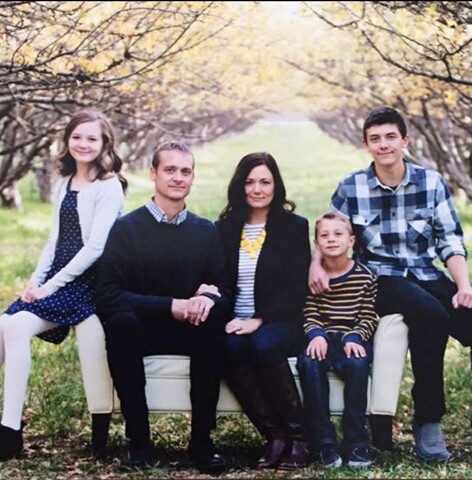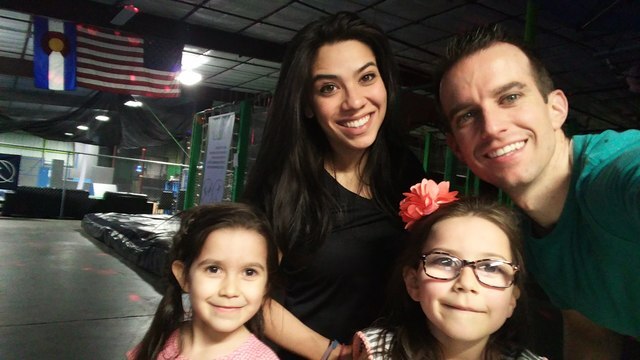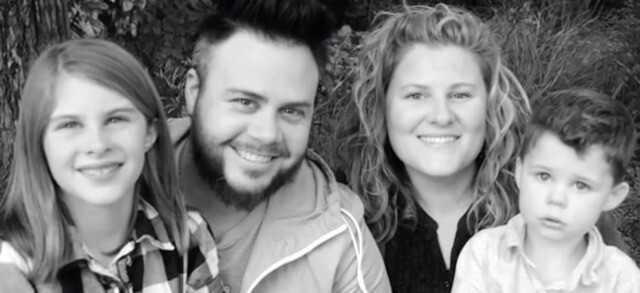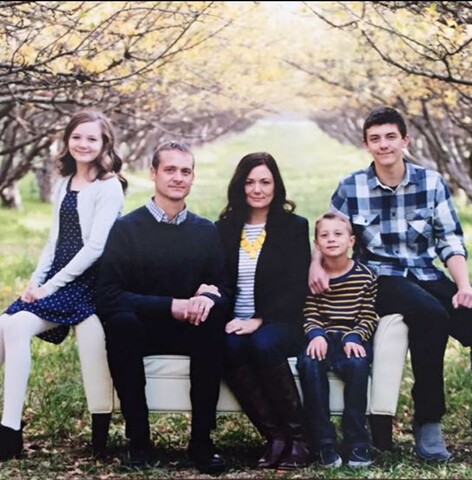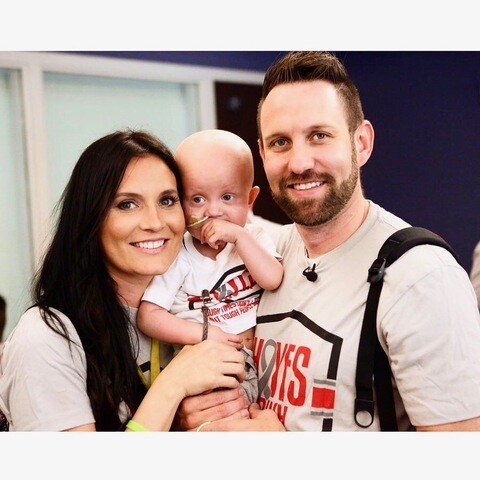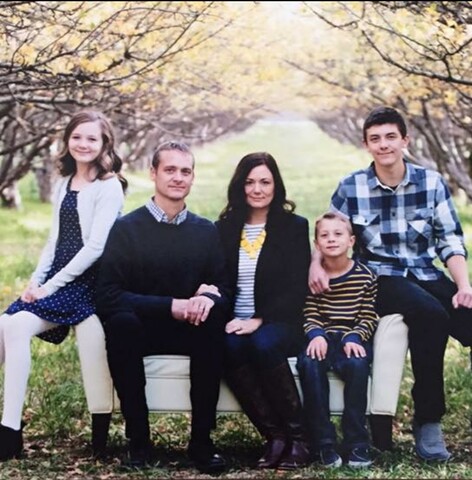Editor’s Note: This article is not intended to be a political statement but rather an introduction to Latter-day Saints who are impacted by this issue.
Nathan Frodsham doesn’t use medical cannabis (also known as medical marijuana) anymore, despite the fact that it not only treated the pain caused by his degenerative disc disease but it also helped him holistically in ways he didn’t anticipate.
“I had trouble sleeping. I had trouble concentrating. I’d become more sedentary. I’d gained some weight. When I started taking cannabis, probably after about a month of taking it, I started to notice that I no longer needed my sleeping aids. I had asthma and I wasn’t using my inhaler as frequently,” Frodsham, a data scientist and father of three, says. “I lost 50 pounds. I actually enjoyed exercising.”
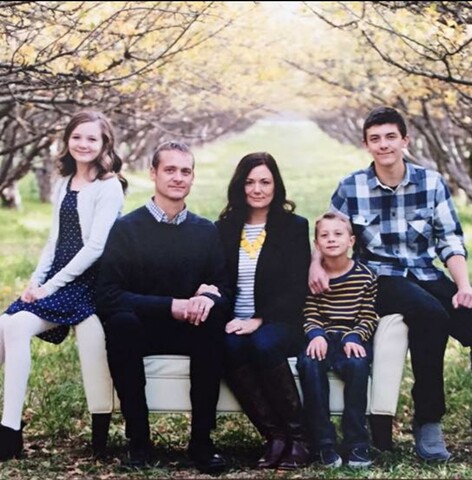
Photo courtesy of Nathan Frodsham
But Frodsham and his family no longer live in Washington, where medical cannabis is legal and where it was originally recommended by his physician. The Frodshams now live in Utah, where medical marijuana is not currently legal. Despite the many benefits of medical marijuana for him, Frodsham feels his example as a father is more important than using medical marijuana.
“I could but I don’t because it’s illegal and it’s dangerous,” Frodsham explains. “I don’t use it right now and that’s why I’m campaigning for it. I don’t fault anyone who does, who uses it for medical reasons, but I’m a father and I’ve found it’s almost impossible to hide something like that, and I want to be a good example. It’s not a good example to be breaking the law in front of your kids.”
The Church’s Involvement
The Church of Jesus Christ of Latter-day Saints has been involved in discussions surrounding the legalization of medical cannabis in Utah for weeks.
In August, the Church joined a community coalition opposing Proposition 2, raising concerns about possible unintended consequences should the ballot initiative be approved by voters in November.
On October 4, a legislative alternative to Proposition 2 was unveiled with broad community support, including from the Church, offering a path forward for medical cannabis while limiting the negative societal impact.
The long road to the legislative alternative is the result of those who have worked tirelessly, many of whom have experienced firsthand the benefits of medical cannabis.
“It could’ve gone so differently, but a lot of patients came together and worked really hard to try to bridge the gap in understanding,” Frodsham says of the efforts toward legalization. “And the Church leaders . . . really responded in a very special way, so I think a lot of people feel like this is a big miracle.”
In an effort to provide readers with a glimpse into why the Church is working to reach an understanding regarding medical marijuana, we interviewed Frodsham as one of four Latter-day Saints who have offered their faces and experiences to help others understand the complexities behind the issue of medical cannabis within the Church.
Hayes Tate
Former University of Utah football player Steve Tate’s son Hayes passed away peacefully on December 3, 2016, but his parents continue to campaign for the medical cannabis that temporarily eased Hayes’s pain and gave them their son back.

Photo courtesy of Steve Tate
At 9-months-old, Hayes Tate was diagnosed with Choroid Plexus Carcinoma and his parents watched him battle for his life while receiving the most aggressive forms of chemotherapy. Watching his son go through withdrawals in the middle of the night from the drugs he was used to having circulate through his bloodstream, Steve Tate asked himself, “Is there not another option? Is there nothing else I can do?” It was watching these treatments wear on their declining son that led the Tates to explore the idea of medical marijuana.
Together, they debated the moral issue of marijuana as members of The Church of Jesus Christ of Latter-day Saints.
“Regardless of whether it’s [this Church] or religion in general, there’s an issue when it comes to the name 'marijuana.' There’s a negative connotation with it,” Tate explains.
But ultimately, for him and his wife, Tate says, it came down to a question of, “What would I rather do for my child? Would I rather have him be addicted and getting withdrawals from the opioid use, or would I turn to something that, for all intents and purposes, is natural?”
They learned that medical marijuana can be administered in many different forms and decided to have Hayes receive his dose through a rice grain-sized droplet on a teething tablet that was absorbed into his bloodstream through his cheek.
While studies are planned to determine if medical cannabis can be helpful in controlling or curing cancer, the goal was not to heal Hayes’s cancer but to improve the quality of the life he had left. And it worked. Within a week, his parents noted improvements in his complexion, appetite, and social interaction.
“It was noticeable just in his appearance and his social interaction,” Tate says. “It really did give my son quality of life, which is all I wanted as a parent.”
Tate doesn’t fault those who may question the family’s decision to use medical cannabis to treat their son’s rare form of aggressive cancer. Before his own experience, he says he probably would have found himself on the other side of the issue.
Connor Campbell
As a mother of a child who suffered from seizures every 45 minutes for years, Emilie Campbell was exhausted and needed relief.
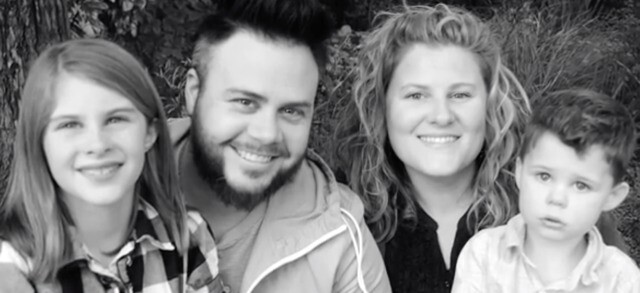
Screenshot from KSL
Six-year-old Connor Campbell’s seizures were growing worse each year when, in 2013, his parents, Emilie and Neon Trees bass guitarist Brandon Campbell, began to hear and see more about seizure control being achieved with the help of cannabidiol (CBD) oil. CBD oil is one of two extracts that can be taken from a marijuana plant and does not produce intoxication or marijuana’s “high.” Emilie worked tirelessly with lawmakers and senators lobbying and drafting a bill to make CBD oil available and legal in Utah, and in 2014, the bill was passed. However, she soon found that CBD oil did not help Connor with seizure control.
“Those were some dark years. I was scared,” Emilie recalls. “I thought, ‘If this is how it is going to be forever, we can’t do it.' You can’t sustain life on 15 sleep interruptions a night. It was a mess.”
She was able to get Connor an oil with tetrahydrocannabinol (THC, the other extract in the marijuana plant), and he went 18 months without a grand mal seizure—a type of seizure he had been having six times a day. To Emilie Campbell, it was “almost miraculous.”
Connor is now 11, and the family has continued to observe setbacks over the past five years as Connor’s body has grown, which has resulted in changes to dosage and ratios of his oils. But his mother says that nothing aside from medical cannabis has given them any seizure control.
Medical cannabis has provided Emilie Campbell with peace that she is not giving her son something that could be lethal, noting that if she were to accidentally double one of her son’s other medications, it could easily kill him, but he could swallow his whole bottle of cannabis oil, and while it would make him sick, there is zero chance he would overdose. She has seen many of her friends' children become dependent on their medications, and she is grateful that this will not be the case for her son.
Despite her strong advocacy for using medical cannabis when needed, she says she is also the first to admit that medical marijuana does not come without risks.
“If used improperly, you will be messed up and full of regret,” Campbell warns. “But when it comes to responsible use and medicinal use, I have zero reservations. I realize now, after so many years of using it in different forms for Connor, it’s not as scary as people think. It’s not dangerous like some of the anti-seizure meds are.”
Enedina Stanger
In 2015, Enedina Stanger cheered her husband on in his American Ninja Warrior run from a wheelchair. In 2018, she competed on the show herself. But what most people don’t know is the role that medical cannabis played in helping her get out of her wheelchair and walk again.
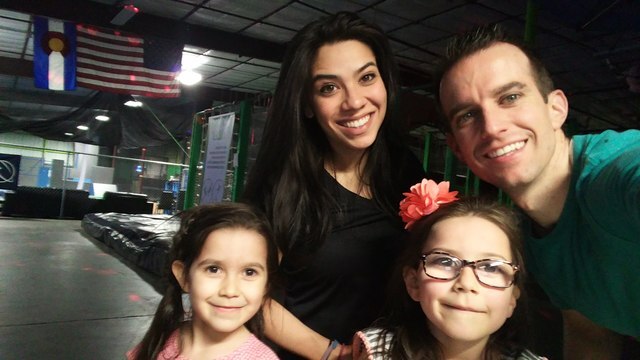
Photo courtesy of Enedina Stanger
Stanger suffers from Ehlers-Danlos syndrome, a condition that affects an estimated 1 in 2,500 to 1 in 5,000 people and causes one’s joints to frequently dislocate. The pain, which Enedina has described as “grueling, electrifying, paralyzing, intense,” led her to begin discussing hospice and planning her funeral as a young mother of two small daughters.
“My biggest prayer was that I would be able to see my daughter walk, but I didn’t think that would ever happen,” Stanger says. Her youngest daughter was in her first year of life at the time of Stanger’s diagnosis. “That was just a goal—that I would be able to see them a little longer. That was really the motivation.”
For Stanger, the condition began to manifest itself neurologically but progressed to include Parkinson-type tremors, multiple sclerosis-type nerve pain, and a heart that only beat 30 times per minute.
The daughter of a Latter-day Saint bishop, Stanger and her family live in Colorado, where medical cannabis is legal, and she uses it in many forms including oils, tinctures, and pills, but her use is incredibly regulated.
Stanger, along with Frodsham, has been surprisingly vocal in opposing Proposition 2 in Utah, despite having moved to Colorado as a medical refugee, because she has seen unintended consequences that come when laws are passed in haste without the support of doctors and law enforcement. She believes it is impossible to have a viable medical cannabis program in the nation without those things.
“My hope is that Utah can become the example for the nation where doctors, law enforcement officials, and communities are all accepting of a medical cannabis program and doctors are required to get the education to help patients,” Stanger says. “It is an opportunity to change the stigma and educate the communities while simultaneously providing viable research and helping patients all at the same time.
“Medical cannabis is a viable option for patients. Accepting and learning from the plant is crucial in order to understand, accept, and properly treat patients.”
Creating Understanding
When Frodsham told his family and friends about his use of medical cannabis, he says he could have heard a pin drop.
“It was so silent,” he says. “I think a lot of people were very surprised. They were questioning either A) Did it really help me? or B) Have I changed? Am I one of those guys who was trying to get cannabis for the recreational aspect of it?”
However, within months, he saw his family rally around him. His mom became an “internet expert” researching the topic and his parents agreed to do a television interview in support of their son.
Steve and Savanna Tate hesitated to tell anyone that they were experimenting with medical marijuana treatments for their son, but Steve says he will never forget when he finally opened up to his brother, someone he has always look up to. “Well, I would do the same thing,” his brother immediately replied.
“My biggest fear was being judged,” Tate says today. “My biggest hope is that before you form an opinion, you ask yourself what you would do. Any parent out there who sees their child in pain, you would do anything to take that pain away.”
Emilie Campbell is grateful for the support her family has received, noting that many older members of her ward offered to drive her to Colorado to get what she needed to care for Connor. When her family recently moved into a new ward, she was shocked when her bishop pulled her aside and asked, “Have you ever considered cannabis for your son’s seizures?”
“I was just floored,” she says. “I was like, ‘You don’t know me yet, but we’re going to be good friends.’”
Regardless of where her fellow Latter-day Saints stand on the side of the legalization of medical cannabis, Enedina Stanger says if she could help fellow Latter-day Saints understand one thing about medical cannabis, it would be the same thing she hopes people understand about the Word of Wisdom.
“Every single thing that the Lord put on this earth is for the benefit and use of mankind,” Stanger said. “But it is up to us as human beings to do that responsibly for ourselves and for our environment. We are stewards of this land and we are stewards of this earth and we have the right and the ability to use everything that God has given us to benefit us, but we have to protect people from harm also.”
Lead image provided by Steve Tate.
